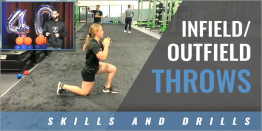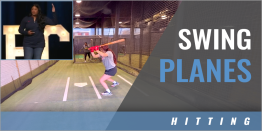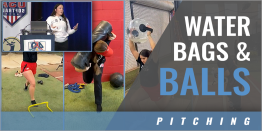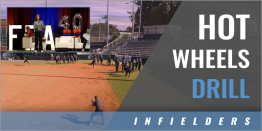|
By: Barb Kutch, Baseball and Softball Instructor Provided by: National Fastpitch Coaches Association In a sport where there is no clock, timing is everything in softball. While an athlete may appear fast, subjective opinions lead to guessing. With a simple stopwatch (or phone), everyday plays can be timed to predict success. During practice, a coach can time several aspects of their defense and offense to perfect the fine details. With the defense, a stopwatch can objectively assess how quickly a play can happen. Take for example a double play. The coach can time how long it takes the defense to turn two. Then, measure times from all infield positions. Now, compare the times to what is considered a fast runner on your team, or known for an opponent. An estimate of this would be less than 2.6 seconds at the higher levels. So, the question is, did the infield turn it fast enough to get this athlete out at first? If yes, than great, the defense is capable of getting out nearly every batter-runner they face. Reinforce this with the team for a confidence boost. If not, where did the team lose time? At this point, the coach can look at each individual ball transfer and identify where to improve. This same approach can be used for routine ground balls. In the outfield, a player's arm strength can be indirectly measured via a stopwatch. On fly balls with a runner on third, the outfielder is looking to fire a strike to home plate to catch the runner. A coach can time the play from the moment the ball touches the glove (the same time the runner leaves the bag) until the moment the throw is caught by the catcher. This assumes the throw is not cut off. This time is then compared to a fast runner's time. With this, the coach can advise the athlete and the team how long a throw can be expected to successfully get the runner without a cut. Coaches can try the same athlete at different outfield depths to determine the optimal distances for an unassisted outfield throw. Similarly, cutoffs can be assessed the same way to optimize their positioning. Similar to the infield, the coach compares these times to the fastest runner and analyzes the outfielders' technique for lost time. This concept can also be applied to balls hit in between fielders. When defending bunts, even the smallest hesitation can be disastrous for the defense. With either balls placed in an ideal bunt location, or being bunted live, the coach can time infielders. When combined with base running times, infielders can learn when they will have enough time to go for the lead runner versus the batter. Similar to the outfield, it will be based on the region in which the ball is fielded. The goal is to train infielders to instinctively know what they are capable of prior to the play occurring in the game.On the opposite side of the diamond, a stopwatch can provide amble information for base running. In practice, a coach can measure their athletes' times from home to first, to second, on stolen bases, first to third, and tag up times at third. Then, when scouting the opposing team, a coach can compare their athletes' abilities to what the defense presents to optimize their decisions. An example is with a runner on first base and a ball hit into the right field gap. The offensive coach knows their runner can go from first to third in five seconds. From the coach's earlier scouting, the coach knows the right fielder takes seven seconds to get a throw to third from this place in the outfield. Based on this, the offensive coach knows they can send their runner to third with a good advantage. It is important to note, though, that this is based on ideal situations. If the runner makes a horrible turn at second, or has a bad slide at third, the defense may regain the advantage. Pop times have become common practice. It is a great way to assess individual catcher skills. However, stolen bases start for the runner with the pitcher. To fully judge the stolen base potential of athletes against specific pitchers, a total time needs to be measured. A coach measures the time from pitch release or foot plant to second base. This includes the pitch time and the pop time. This is the time the runner has to be beat. And again, with previous testing a coach will know what members of their team have the ability to beat the throw based on their running times. With all of these ideas, the practice progression starts with the coach using a stopwatch to provide immediate feedback to the team after repetitions. As performance improves, practice can shift to refining these new areas to develop instinctual movements. This may or may not need timing feedback. Just like establishing any new pattern, the end goal is for improved game performance. This may be increased extra bases or additional outs. It may help improve confidence. Ultimately, it may help a team increase wins. |







